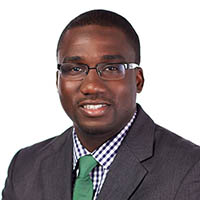AARP Hearing Center
Money Follows the Person Program: A Win-Win Solution, but Will it Stay Around?
By Jean Accius, Molly Evans, March 18, 2019 10:47 AM

As AARP’s recent report highlights, the majority of Americans prefer to remain in their homes as long as possible. Helping to enable that are home- and community-based services (HCBS)—the kind of long-term supports provided to older adults and individuals with disabilities residing in communities as they age.
Thus, HCBS is already the preferred option over nursing homes and, with approximately 10,000 people turning 65 every day in the U.S., its role will only increase. Over half of these older adults will eventually need assistance with daily activities like bathing, dressing, eating, housekeeping, transportation, paying bills, and preparing meals, as well as help with complex care needs like managing medications and wound care (e.g., changing bandages or applying medications to surgical incisions).
Home- and community-based services are not only the preference of most people, they are also cost-effective. On average, for every one person residing in a nursing home, Medicaid—the largest public payer of long-term services and supports (LTSS)—can fund three individuals receiving community-based long-term care. Yet in spite of both consumer preferences and HCBS being more cost-effective, Medicaid funds continue to flow more toward nursing facility care for older adults and individuals with disabilities. And while several states have made progress in balancing their funding more toward HCBS, investments are inconsistent both within and across state lines, creating geographic disparities in access to HCBS.
A federal program has proven effective in efforts to balance funding more appropriately and help more people continue to live in the community. Yet that program’s future is unclear.
Money Follows the Person: Demonstrated Results
The Money Follows the Person Rebalancing Demonstration (MFP) is a major federal demonstration program created to expand the range of LTSS options so individuals have greater choice in the services they receive, how and where those services are delivered, and who provides them. In addition to promoting consumer choice, MFP was designed to foster innovation by helping states, in collaboration with stakeholders, make widespread changes to improve the delivery of their LTSS systems and serve more people in the community. It provides states with flexibility and enhanced funding to transition Medicaid beneficiaries from nursing facilities and support them in the community. Currently, 43 states and the District of Columbia participate in the MFP program. As of 2018, more than 88,000 Medicaid beneficiaries transitioned to the community as a result of MFP.
A report to Congress confirms the success of the MFP program:
- MFP participants who transitioned to the community reported significant improvements in overall life satisfaction, better quality of care, and greater community integration. Studies also showed reductions in reinstutionalization and unmet personal care needs—especially for those with the highest such needs and the severest cognitive impairment.
- Transitioning MFP participants to the community produced significant savings to Medicaid and Medicare. For example, data revealed that transitioning one older adult from a nursing home to home- and community-based LTSS meant average cost savings for Medicaid and Medicare of $22,080 during the first year after the transition alone—translating to roughly $275 million in medical and LTSS cost savings.
- Many states have developed more capacity and infrastructure to support people right in their own communities. Missouri used its rebalancing funds to address growing care-management caseloads by expanding case management services to ensure families had greater access to their service coordinator. States are also using the additional funding to improve access to affordable and accessible housing, train direct-care workers and medical professionals, conduct outreach, and undertake other efforts that enable people to live in the community.
Uncertain Future for Sound Policy
Despite the Money Follows the Person program’s success, its future is unclear. The program, in fact, expired at the end of fiscal year 2016, and while states can continue to claim funding through fiscal year 2021, some states have exhausted their funding allotment. Earlier this year, Congress did provide some short-term funding, but those dollars are likely to run out before September.
A current bill in Congress, called The EMPOWER Care Act, would strengthen MFP and extend the program through 2023.
The need for this program remains as great as ever. A recent report identified over 50,000 nursing home residents who expressed a desire to speak with someone about leaving their facility but also reported that assistance in making this happen was not available. In light of the aging population and people’s desire to age with options, extending the Money Follows the Person program is critical for both consumers and states.
Given that MFP both supports people’s preferences and enables the expansion of home- and community-based service options that are generally more cost-effective than nursing homes, the time to extend this program is now.

Jean Accius is senior vice president for AARP Thought Leadership and International Affairs. His areas of expertise include aging, caregiving and long-term care policy.

Molly Evans was a fellow with the AARP Public Policy Institute. Her work focused on long-term services and supports, Medicaid, family caregiving and housing policy.































































